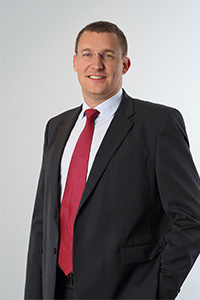Today, investment managers must consider ESG before selecting an investment. If the concept seems obvious, turning the theory into practice becomes a tremendous challenge.
To better understand the issue, we need to (re)clarify what is ESG and how asset managers can integrate these concepts in their investment policy.
Unfortunately for the general public, as well as for politics and society, more often than ever the Environmental “E” of ESG takes center stage, thereby relegating “Social and Governance” as nice-to-have criteria, if they haven’t been totally forgotten. But as most of us know, ESG is much more complex topic than its naming convention may allude to.
The United Nations’ Sustainable Development Goals can be considered the first indisputable definition of ESG. It includes 17 different goals to be addressed and achieved, for example, “zero hunger”, “quality of education”, or “gender equality”. If these goals are known, simple and available, it becomes difficult when a fund wants to rank every investment according to 17 distinct criteria…
Another definition, as provided by the international standard ISO 26000, explains ESG via seven pillars, including “human rights”, “consumer protection” or “working practices”. Whilst it would seem less complicated to rank an investment by means of 7 variables, unfortunately, as per the United Nations’ definition, there are a minimum of 5 to 7 sub-axes for each pillar, leading to much more complexity in the end.
Other definitions exist, however none of them would be any less complex to implement for an Investment Fund. Whatever definition we take, the asset manager must rank and give a score for each investment based on many criteria. This represents a difficult task, especially where most of the time data does not exist or, when available, could be very incomplete and easily challenged.
 How can we weigh and balance the 17 criteria to estimate the real impact when there exist no norms nor transparent algorithms to rank all activities, companies, and assets?
How can we weigh and balance the 17 criteria to estimate the real impact when there exist no norms nor transparent algorithms to rank all activities, companies, and assets?
To manage this, some asset managers claiming article 8 or 9 according to SFDR , decide to develop their own methodology, shared and auditable, to be as transparent as possible. Unfortunately, even if the methodology is well designed and backed by accurate data, this still does not prevent external parties from performing counter analysis, exposing the investment fund to reputational risks.
Are asset managers in a dead-end with ESG? No, the target is there, and we all must move ahead, in a pragmatic step-by-step approach.
This is the challenge Societe Generale Securities Services (SGSS) is tackling today with its clients: integrating ESG data into all of its business processes, from pre-trade controls to valuation calculations and depositary controls. Because of the factors mentioned above, no seems to have yet reached this ultimate goal, yet this quest is now essential for anyone wishing to support asset managers in what could truly be a new dynamic in the market and one that transforms it in a lasting way.
It will be a long journey which will transform the entire industry. All of us – asset managers, asset servicers, regulators and investors are on this move making small but engaging steps.
Today, every asset manager considers ESG as a part of his investment strategy. Maybe the meaning would differ from one to another, as well as the impact or ranking for all the criteria, but clearly this is already a tremendous change for our industry.
Guillaume Roch, Head of Business Development, Societe Generale Securities Services (SGSS) in Luxembourg
© 2023 funds europe





